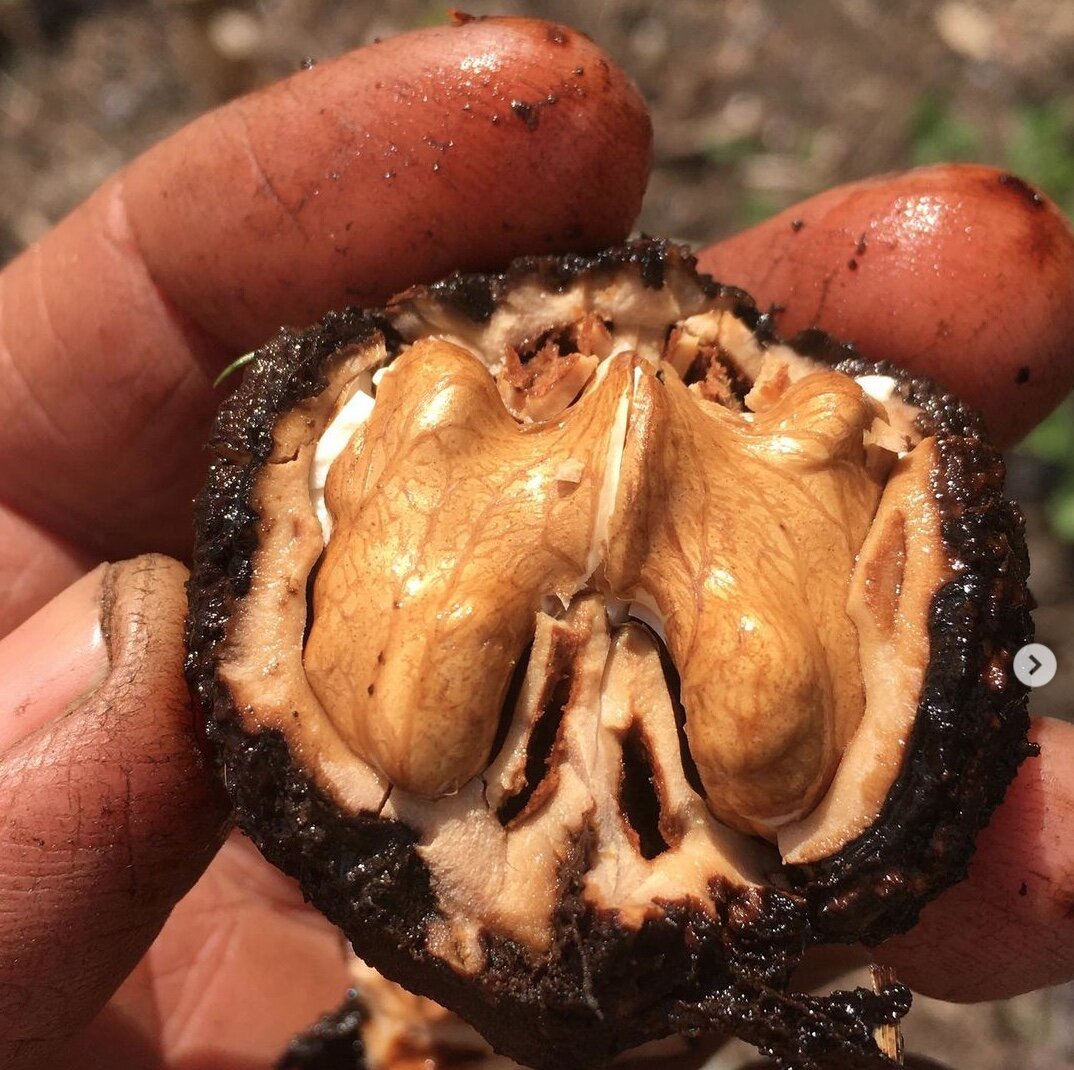Seaberry / Seabuckthorn Berries Frozen, On farm pickup only.
On farm pickup only. (They are available but listed as sold out so people don’t try to order them online - sold on farm only unless special arrangement is made custom).
Fresh frozen berries from the 2023/2024 crop. Organic (of course!), as nutrient dense as they come. More about seaberry benefits here. Sold by the gallon $82.00 per gallon or $130 for 2.
On farm pickup only.
Seaberry Benefits:
Exceptional essential fatty acid content.
Nitrogen fixer
Hardy from USDA zones 3 (maybe 2b) to 7 for sure, probably 8 (I’ve seen growing in Tuscany Italy and have heard first hand reports of them growing in central Canada where it gets to -50F)
Nearly deer proof (very resistant to browse once established and even early on with thorns present)
All parts medicinal from leaves to fruit to bark (non fruit parts used as a tea for centuries)
Fast growing and drought tolerant
Soil hardy – we’ve grown them well in everyting from sandy to heavy dense clay
Birds do not harvest them much if at all
But great bird nest habitat
Needs full to 3/4 day sun minimum
Exceptionally wind hardy – great wind heedge and snow fence
Salt tolerant – grows on Siberian coastal dunes
Bears every year, bears at a young age
Flowers hardy to below 20F – exceptionally reliable and resilient in the face of late frosts
Maintenance free once established -no need to prune
Constituents of Sea Buckthorn Fruit (per 100 grams fresh berries)Vitamin C200-1,500 mg (typical amount: 600 mg)Vitamin E (mixed tocopherols)Up to 180 mg (equal to about 270 IU)Folic acidUp to 80 mcgCarotenoids, including beta carotene, lycopene, zeaxanthine; these contribute the yellow-orange-red colors of the fruit30-40 mgFatty acids (oils); the main unsaturated fatty acids are oleic acid (omega-9), palmitoleic acid (omega-7), palmitic acid and linoleic acid (omega-6), and linolenic acid (omega-3); there are also saturated oils and sterols (mainly β-sitosterol)6-11% (3-5% in fruit pulp, 8-18% in seed); fatty acid composition and total oil content vary with subspeciesOrganic acids other than ascorbic (e.g., quinic acid, malic acid; ingredients similar to those found in cranberries)Quantity not determined; expressed juice has pH of 2.7-3.3Flavonoids (e.g., mainly isorhamnetin, quercetin glycosides, and kaempferol; these are the same flavonoids as found in Ginkgo biloba.100-1,000 mg (0.1% to 1.0%)
On farm pickup only. (They are available but listed as sold out so people don’t try to order them online - sold on farm only unless special arrangement is made custom).
Fresh frozen berries from the 2023/2024 crop. Organic (of course!), as nutrient dense as they come. More about seaberry benefits here. Sold by the gallon $82.00 per gallon or $130 for 2.
On farm pickup only.
Seaberry Benefits:
Exceptional essential fatty acid content.
Nitrogen fixer
Hardy from USDA zones 3 (maybe 2b) to 7 for sure, probably 8 (I’ve seen growing in Tuscany Italy and have heard first hand reports of them growing in central Canada where it gets to -50F)
Nearly deer proof (very resistant to browse once established and even early on with thorns present)
All parts medicinal from leaves to fruit to bark (non fruit parts used as a tea for centuries)
Fast growing and drought tolerant
Soil hardy – we’ve grown them well in everyting from sandy to heavy dense clay
Birds do not harvest them much if at all
But great bird nest habitat
Needs full to 3/4 day sun minimum
Exceptionally wind hardy – great wind heedge and snow fence
Salt tolerant – grows on Siberian coastal dunes
Bears every year, bears at a young age
Flowers hardy to below 20F – exceptionally reliable and resilient in the face of late frosts
Maintenance free once established -no need to prune
Constituents of Sea Buckthorn Fruit (per 100 grams fresh berries)Vitamin C200-1,500 mg (typical amount: 600 mg)Vitamin E (mixed tocopherols)Up to 180 mg (equal to about 270 IU)Folic acidUp to 80 mcgCarotenoids, including beta carotene, lycopene, zeaxanthine; these contribute the yellow-orange-red colors of the fruit30-40 mgFatty acids (oils); the main unsaturated fatty acids are oleic acid (omega-9), palmitoleic acid (omega-7), palmitic acid and linoleic acid (omega-6), and linolenic acid (omega-3); there are also saturated oils and sterols (mainly β-sitosterol)6-11% (3-5% in fruit pulp, 8-18% in seed); fatty acid composition and total oil content vary with subspeciesOrganic acids other than ascorbic (e.g., quinic acid, malic acid; ingredients similar to those found in cranberries)Quantity not determined; expressed juice has pH of 2.7-3.3Flavonoids (e.g., mainly isorhamnetin, quercetin glycosides, and kaempferol; these are the same flavonoids as found in Ginkgo biloba.100-1,000 mg (0.1% to 1.0%)
On farm pickup only. (They are available but listed as sold out so people don’t try to order them online - sold on farm only unless special arrangement is made custom).
Fresh frozen berries from the 2023/2024 crop. Organic (of course!), as nutrient dense as they come. More about seaberry benefits here. Sold by the gallon $82.00 per gallon or $130 for 2.
On farm pickup only.
Seaberry Benefits:
Exceptional essential fatty acid content.
Nitrogen fixer
Hardy from USDA zones 3 (maybe 2b) to 7 for sure, probably 8 (I’ve seen growing in Tuscany Italy and have heard first hand reports of them growing in central Canada where it gets to -50F)
Nearly deer proof (very resistant to browse once established and even early on with thorns present)
All parts medicinal from leaves to fruit to bark (non fruit parts used as a tea for centuries)
Fast growing and drought tolerant
Soil hardy – we’ve grown them well in everyting from sandy to heavy dense clay
Birds do not harvest them much if at all
But great bird nest habitat
Needs full to 3/4 day sun minimum
Exceptionally wind hardy – great wind heedge and snow fence
Salt tolerant – grows on Siberian coastal dunes
Bears every year, bears at a young age
Flowers hardy to below 20F – exceptionally reliable and resilient in the face of late frosts
Maintenance free once established -no need to prune
Constituents of Sea Buckthorn Fruit (per 100 grams fresh berries)Vitamin C200-1,500 mg (typical amount: 600 mg)Vitamin E (mixed tocopherols)Up to 180 mg (equal to about 270 IU)Folic acidUp to 80 mcgCarotenoids, including beta carotene, lycopene, zeaxanthine; these contribute the yellow-orange-red colors of the fruit30-40 mgFatty acids (oils); the main unsaturated fatty acids are oleic acid (omega-9), palmitoleic acid (omega-7), palmitic acid and linoleic acid (omega-6), and linolenic acid (omega-3); there are also saturated oils and sterols (mainly β-sitosterol)6-11% (3-5% in fruit pulp, 8-18% in seed); fatty acid composition and total oil content vary with subspeciesOrganic acids other than ascorbic (e.g., quinic acid, malic acid; ingredients similar to those found in cranberries)Quantity not determined; expressed juice has pH of 2.7-3.3Flavonoids (e.g., mainly isorhamnetin, quercetin glycosides, and kaempferol; these are the same flavonoids as found in Ginkgo biloba.100-1,000 mg (0.1% to 1.0%)






